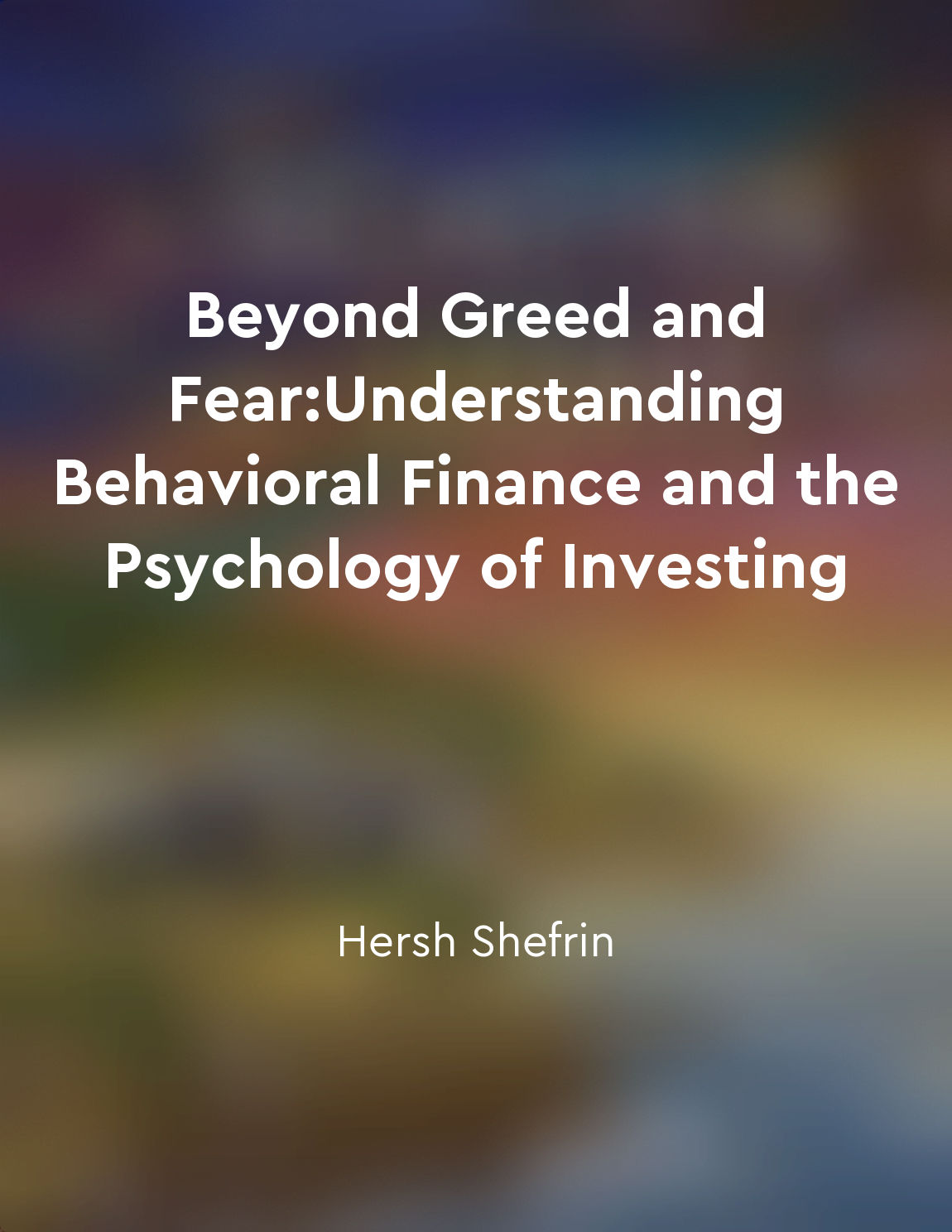Representativeness heuristic can result in inaccurate judgments from "summary" of Advances in Behavioral Finance by Richard H. Thaler
The representativeness heuristic is a mental shortcut that people use when making judgments about the probability of an event. Instead of carefully weighing all available information, individuals rely on how closely an event or object matches a particular prototype or stereotype. This cognitive shortcut can lead to inaccurate judgments because it overlooks important statistical information that may be relevant to the situation at hand. For example, individuals may erroneously believe that a coin is more likely to come up heads after a string of tails because they perceive it as balancing out. This flawed reasoning stems from the representativeness heuristic, which focuses on patterns and similarities rather than considering the random nature of coin flips. As a result, people may make decisions based on faulty assumptions and misinterpretations of probability. In the context of financial decision-making, the representativeness heuristic can lead investors astray by causing them to base their judgments on superficial similarities rather than underlying ...Similar Posts

Relying on evidence leads to more sound conclusions
When it comes to making conclusions or decisions, it is crucial to rely on evidence rather than on assumptions or emotions. Evi...

Financial statement analysis is important
Financial statement analysis is the process of evaluating a company’s financial statements to assess its performance and make i...
Gross Domestic Product (GDP) measures the total value of goods and services produced in a country
Gross Domestic Product (GDP) is a crucial measure in economics. It tells us the total value of goods and services produced with...
Efficient market hypothesis suggests stock prices reflect all available information
The efficient market hypothesis suggests that stock prices reflect all available information. This means that the prices of sto...
Confirmation bias may lead to selective attention
Confirmation bias, a common phenomenon in decision-making, can have a significant impact on how individuals process information...
Avoid market speculation and focus on longterm results
Market speculation can be a dangerous game for investors. It involves making bets on short-term price movements in the hope of ...

The influence of selfcontrol on long-term investment success
Self-control is a critical factor in determining long-term investment success. Investors who lack self-control often succumb to...

Anchoringand-adjustment heuristic impacts estimations
Anchoring-and-adjustment heuristic is a cognitive bias that affects our estimations by relying heavily on an initial piece of i...
Fairness is an important consideration in economics
In the world of economics, there is a prevailing assumption that individuals make decisions based solely on their self-interest...
